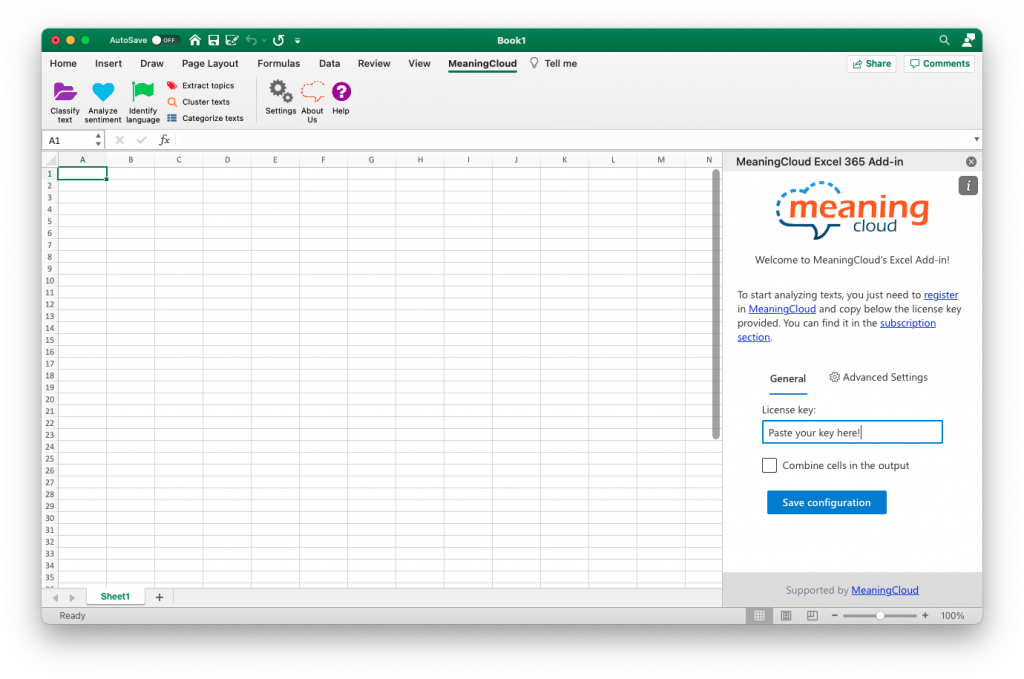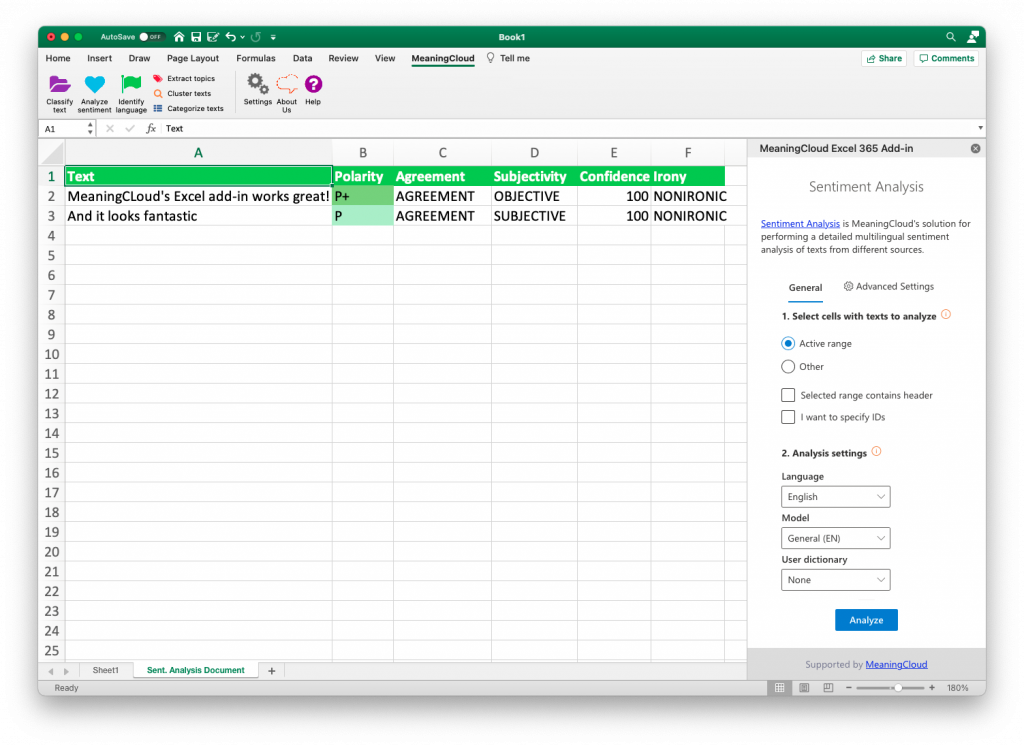Our new Excel 365 add-in has finally arrived!
Excel is the preferred tool for many MeaningCloud users. They access MeaningCloud APIs directly from Excel with our add-in. In the last months, we have received a lot of inquiries about Mac support. So, we partnered with Microsoft to build a new multiplatform version.
Installation
Installing it is a breeze on all platforms. The new add-in is available in Microsoft AppSource:
https://appsource.microsoft.com/en-us/product/office/WA200002421
Click on Get it Now and follow the instructions.
Configuration
You only need your API key to use MeaningCloud. Paste it in the License Key field and you’re ready to start analyzing.
Don’t have one? Create an account for free – no payment method required.

Usage
You can use the APIs directly from the ribbon:

Analyze:
But I don’t use Office 365!

 Digital marketing is becoming a fundamental pillar, by leaps and bounds, in the business plans of practically every business model. Methods are being refined and the search for the connection between brand and user is expected to become increasingly more precise: a related advertisement is no longer sufficient, now the advertisement must appear at the right time and in the right place. This is where categorization proves to be an exceedingly useful tool.
Digital marketing is becoming a fundamental pillar, by leaps and bounds, in the business plans of practically every business model. Methods are being refined and the search for the connection between brand and user is expected to become increasingly more precise: a related advertisement is no longer sufficient, now the advertisement must appear at the right time and in the right place. This is where categorization proves to be an exceedingly useful tool.

 [EDITOR’S NOTE: This is a guest post by Xinyi Duan, Director of Technology and Data Research at Liberty Shared.]
[EDITOR’S NOTE: This is a guest post by Xinyi Duan, Director of Technology and Data Research at Liberty Shared.]
